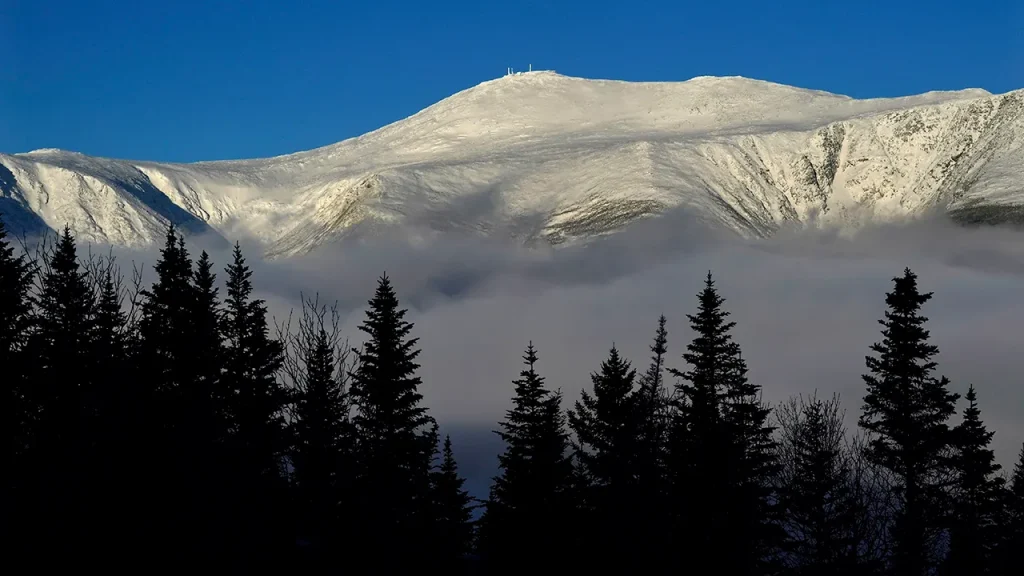Mount Washington Rescue: A Stark Reminder of Hiking Preparedness
In a dramatic weekend rescue operation on Mount Washington in New Hampshire, more than 20 hikers found themselves stranded in dangerous whiteout conditions at the summit. The incident has drawn attention to the critical importance of proper preparation and research before attempting to conquer New England’s highest peak, which is famously known as the “Home of the World’s Worst Weather.” Andy Vilaine, assistant general manager for the Mount Washington Cog Railway, reported that most of these hikers were shockingly underprepared, with many suffering from hypothermia and lacking appropriate gear for the harsh mountain conditions they encountered. Even more concerning, some admitted this was their “first hike ever” – a startling revelation considering Mount Washington’s notorious reputation for extreme and unpredictable weather patterns.
The situation was particularly dangerous because many of these hikers had reached the 6,288-foot summit without realizing that summit services were unavailable and that the state park had closed for the season. This fundamental lack of research put them in a precarious position once they reached the top. As Vilaine pointedly reminded, “The summit is halfway” – highlighting the often-forgotten truth that reaching a mountain’s peak is only half the journey, and the descent can be equally if not more challenging than the ascent. The mountain’s conditions can shift rapidly, turning what might seem like a challenging but manageable hike into a life-threatening situation within minutes, especially during the transitional seasons when weather is most volatile.
The Mount Washington Cog Railway, a historic rack-and-pinion railway that typically offers tours along the mountain, became an unexpected lifeline for these stranded hikers. While the railway operates year-round, it follows seasonal protocols – after mid-October, instead of continuing to the summit, it only carries visitors to Waumbek Station at 4,000 feet. This is because, as stated on the railway’s winter information page, “by the last week of October, sub-arctic conditions make the summit inhospitable to casual visitors.” The railway’s staff played a crucial role in bringing these hikers to lower elevations and safety, potentially preventing what could have become a tragic situation had the rescue not been executed promptly.
The New Hampshire State Park authorities took to social media following the incident, posting on Facebook: “Multiple people have arrived at the summit the last few days very unprepared for winter and required assistance. Be ‘wildly responsible’, and please do some research on current higher summit weather and bring everything needed to hike in winter conditions or just hike another day.” This public appeal underscores a growing concern among park officials and rescue services about hikers underestimating the challenges of mountain environments, particularly during seasonal transitions when conditions can be deceptively dangerous. What might appear as a manageable autumn day at lower elevations can quickly transform into winter-like conditions at higher altitudes.
This incident is not isolated but reflects a broader pattern of outdoor enthusiasts venturing into wilderness areas without adequate preparation or understanding of the environments they’re entering. Mount Washington has a long history of claiming lives and requiring rescue operations precisely because its weather can change so dramatically and severely. While the mountain stands at just 6,288 feet – modest compared to many western peaks – its position at the convergence of several major storm tracks and its exposure to winds from the Atlantic Ocean create uniquely severe conditions. In fact, the mountain held the world record for directly measured surface wind speed (231 mph) for over six decades until 2010, illustrating the extreme forces at work on its slopes.
The Mount Washington rescue serves as a powerful reminder of the respect nature demands and the responsibility each hiker bears for their own safety and preparedness. Outdoor recreation has surged in popularity, particularly since the pandemic prompted more people to seek experiences in nature, but this increase hasn’t always been accompanied by sufficient education about wilderness safety. Basic preparations include checking weather forecasts specifically for higher elevations, bringing appropriate clothing and gear for conditions worse than expected, carrying emergency supplies, telling someone about your hiking plans, and understanding when to turn back. As Vilaine urged in his statement following the rescue, “Please don’t become a statistic and do your research before venturing out.” These words of caution echo what experienced hikers and mountain rescue teams have been emphasizing for years: the mountains will be there another day, but poor decisions in challenging conditions can have permanent consequences.











